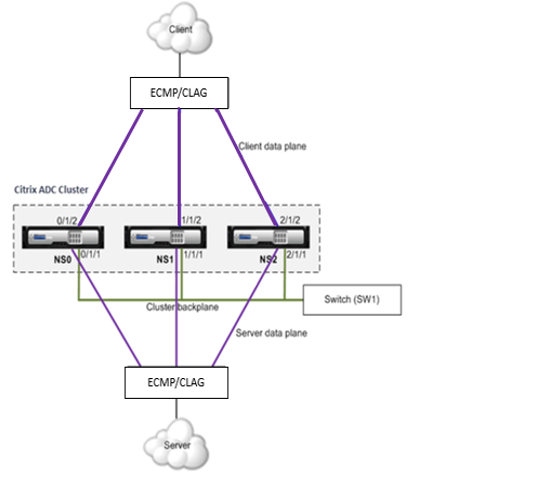This content has been machine translated dynamically.
Dieser Inhalt ist eine maschinelle Übersetzung, die dynamisch erstellt wurde. (Haftungsausschluss)
Cet article a été traduit automatiquement de manière dynamique. (Clause de non responsabilité)
Este artículo lo ha traducido una máquina de forma dinámica. (Aviso legal)
此内容已经过机器动态翻译。 放弃
このコンテンツは動的に機械翻訳されています。免責事項
이 콘텐츠는 동적으로 기계 번역되었습니다. 책임 부인
Este texto foi traduzido automaticamente. (Aviso legal)
Questo contenuto è stato tradotto dinamicamente con traduzione automatica.(Esclusione di responsabilità))
This article has been machine translated.
Dieser Artikel wurde maschinell übersetzt. (Haftungsausschluss)
Ce article a été traduit automatiquement. (Clause de non responsabilité)
Este artículo ha sido traducido automáticamente. (Aviso legal)
この記事は機械翻訳されています.免責事項
이 기사는 기계 번역되었습니다.책임 부인
Este artigo foi traduzido automaticamente.(Aviso legal)
这篇文章已经过机器翻译.放弃
Questo articolo è stato tradotto automaticamente.(Esclusione di responsabilità))
Translation failed!
在群集中使用 USIP 模式
在使用源 IP (USIP) 模式下,群集或 NetScaler 设备使用客户端 IP 地址将每个数据包转发到相应的后端服务器。
USIP 模式流量分布
在 ECMP 和 CLAG 部署中,USIP 模式行为不同于客户端数据平面和服务器数据平面的流量分布。以下部分提供了有关 USIP 模式行为的更多信息。有关 USIP 模式下的 CLAG 的更多信息,请参阅 使用群集链接聚合。
USIP 模式
群集使用客户端 IP 打开服务器端连接。根据 useproxyport 设置,源端口可能会被保留,也可能不会保留。
USIP useproxyport 场景
通信流的 USIP useproxyport 处于开状态,选择源端口的方式是反向流量哈希到流量处理器。它确保在服务器端进行单一转向。
通信流的 USIP useproxyport 处于关闭状态,源端口被保留,因此服务器端口有双重转向。
重要
- 当 USIP 处于开状态时,客户端 IP 将用于后端服务器连接,并且需要在群集节点之间分配响应流量。您可以使用 ECMP 或 CLAG 部署在服务器端进行流量分配。在服务器端没有流量分配的情况下,整个返回流量可能会落在单个群集节点上,从而导致拥塞。
set rsskeytype –rsskey symmetric命令用于在useproxyport关闭部署中将双重转向减少为单个流量转向。服务器端和客户端连接的 4 元组保持不变。例如,通配符 MAC 模式虚拟服务器。
限制
禁用本地进程时,USIP 不起作用。
USIP 模式部署
下图描述了群集设置中的 USIP 模式部署。

使用 CLI 配置以下内容
-
启用路由协议。
enable ns feature <feature>示例:
enable ns feature ospf -
为每个节点添加一个斑点 SNIP 地址,并在其上启用动态路由。
add ns ip <SNIP> <netmask> -dynamicRouting \( ENABLED | DISABLED ) –ownerNode <positive\_interger> –ownerdownResponse \( YES | NO )示例
- add ns ip 192.0.2.1 255.255.255.0 -dynamicRouting ENABLED –ownerNode 0 –ownerDownResponse NO - add ns ip 192.0.2.2 255.255.255.0 -dynamicRouting ENABLED –ownerNode 1 –ownerDownResponse NO - add ns ip 192.0.2.3 255.255.255.0 -dynamicRouting ENABLED –ownerNode 2 –ownerDownResponse NO -
添加一个 VLAN。
add vlan <id>示例
add vlan 300 -
将群集节点的接口绑定到 VLAN。
bind vlan <id> -ifnum <interface_name>示例
bind vlan 300 -ifnum 0/1/2 1/1/2 2/1/2 -
将发现的 SNIP 地址之一绑定到 VLAN。将一个斑点 SNIP 地址绑定到 VLAN 时,在该子网中的群集上定义的所有其他斑点 SNIP 地址将自动绑定到 VLAN。
bind vlan <id> -IPAddress <ip\_addr | ipv6\_addr> -netmask示例
bind vlan 300 –IPAddress 192.0.2.1 255.255.255.0 -
使用 VTYSH shell 在 ZeBOS 上配置路由协议。在节点 ID 0、1 和 2 上配置 OSPF 路由协议。
vtysh configure terminal ns block-sec-rtadv router ospf owner -node 0 router-id 192.0.2.1 exit-owner-node owner-node 1 router-id 192.0.2.2 exit-owner-node owner-node 2 router-id 192.0.2.3 exit-owner-node network 192.0.2.0/24 area 0 default-information originate always -
使用 CLI 在 Cisco 3750 路由器上执行以下配置。
Configure terminal feature ospf interface vlan300 no shutdown ip address 192.0.2.100/24 Configure terminal router ospf 1 router-id 192.0.2.100 network 192.0.2.0 0.0.0.255 area 0
备注
客户端和服务器上的流量分布不一定是相同的。例如,您可以在客户端配置 ECMP,在服务器端或相反的方式配置 CLAG。
计划背板的额外容量,因为 USIP 部署中有更多的转向开销。
服务器端与 CLAG 和监视器静态路由 (MSR) 相关的配置必须保持不变。
流量指导更多地是在 USIP 模式部署中。
共享
共享
This Preview product documentation is Cloud Software Group Confidential.
You agree to hold this documentation confidential pursuant to the terms of your Cloud Software Group Beta/Tech Preview Agreement.
The development, release and timing of any features or functionality described in the Preview documentation remains at our sole discretion and are subject to change without notice or consultation.
The documentation is for informational purposes only and is not a commitment, promise or legal obligation to deliver any material, code or functionality and should not be relied upon in making Cloud Software Group product purchase decisions.
If you do not agree, select I DO NOT AGREE to exit.